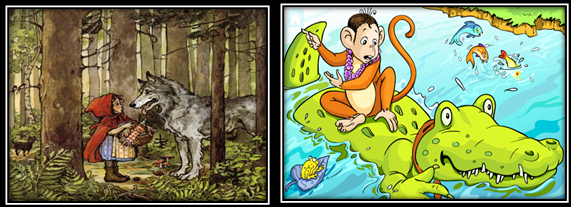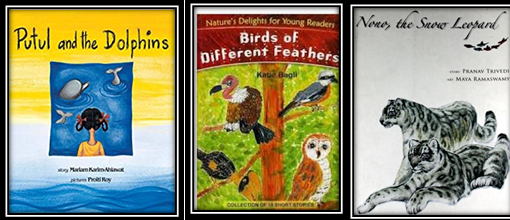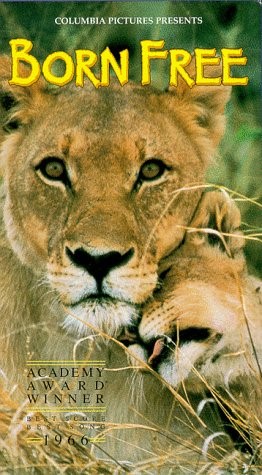Recommended Reading for Kids about the Wilderness
Thought The Jungle book by Rudyard Kipling was the book to reach out for to give your child a sense of the Indian Jungle? Cannot think beyond Mowgli, Bageera and Baloo to introduce your child to a forest? Think again!
Jungle book by Rudyard Kipling is no doubt one of the most popular children’s books with tales of an Indian jungle. I too have read and enjoyed it as a child and my children have enjoyed it as a book, on screen and on stage. I have loved Mowgli and enjoyed singing along with Baloo, laughed at Louis the Monkey and feared Shere Khan, the tiger. It is an evergreen story that has lived on for years.

BUT…(you knew a But was coming along!)… while Kipling’s Jungle Book is great for some song, dance and entertainment, if you want to give your child a glimpse into the world of the Indian jungle, you should be looking elsewhere.
The Jungle Book is dated. Written in a time when Indian jungles were thriving, it tells the story of another time, a different era and altered sensibilities. The Tiger, our national animal, is today facing a battle for survival. A story that villainizes the tiger and has it murdered in the end, is not exactly what the doctor (err…the conservationist) would’ve ordered for modern times.
And if it’s an introduction to the jungle you really want to give your child… Take a reality check. Humans are not tiger-food, bears are not to be befriended and leopards are not exactly a child’s best friend! Most importantly, tigers are not blood-thirsty cats waiting to devour little boys. If you wish to give your child a realistic portrayal of the Jungle, Jungle Book is clearly NOT the story you should be reaching out for.
Like several other children’s books about animals, Jungle Book villainizes the predator (Shere Khan) and misrepresents life in the Forest. While I understand that any story rests on conflict, I do not agree with the method of constantly making a baddie out of the predator. Nor do I appreciate so much, the conclusion which ends in the killing of the tiger, that is today, severely endangered.
With the passage of time and tiger numbers dwindling in the wild, the Jungle Book too, needs a re-look as a children’s book and it is not the story that it once was. (Of course, there have been other controversies around The Jungle Book with Kipling accused of racism and imperial supremacy… But that is another matter altogether).
Not only does this colour your child’s understanding of the predator – prey relationship, but it also adds an artificial human lens of looking at Nature. Good and Bad, Evil and Innocent, Virtuous and Sinister are human values and judgements that are completely absent in Nature.
If a fig tree strangles a palm tree, neither is the fig being evil and violent, nor is the palm being gullible and innocent. Where a tiger or a lion hunt and kill a deer, the tiger and lion are not being evil and sinister. While it is natural to feel compassion for the prey, it is also important for the child to understand that the predator is also just being its natural self.
Several children’s stories villainise the predator. Whether it is cartoons like Tom and Jerry or Jataka Tales like the Monkey and the Crocodile, children are subtly picking up an incorrect notion of the predator – prey relationship where they begin to see the predator as a villainous, blood-thirsty and sinister creature.

Stories from the Panchatantra, Hitopadesha Tales
and Aesop’s Fables
too have jungle animals making appearances. While they might be great for teaching children moral lessons, if you are looking to give your child an honest and true impression of a jungle, they do not fit the bill.

Should you wish to give your child a more realistic and yet enjoyable reading experience of life in the jungle, here is a list of authors and stories I would highly recommend.
RUSKIN BOND
Ruskin Bond was and continues to remain one of my favourite authors. His stories are simple and yet endearing and remain with you for a long time. In his collection of stories like Great Stories for Children or Tigers for Dinner, Bond
transports you to the setting of his stories, whether it is the hills of Mussoorie or the jungles of North India. Many of his stories revolve around trees, birds and animals, all of which give children a realistic understanding and appreciation of Nature.

Simple, clear and lucid writing combined with an honest portrayal of life in the Jungle. That’s Ruskin Bond for you.
JIM CORBETT
Jim Corbett, popularly known as Carpet Sahib in North India, was a legendary hunter-turned- conservationist in whose honour the famous Jim Corbett National Park in Uttarakhand has been named.
Corbett wrote about his experiences in hunting down man-eating tigers and leopards in the jungles and his stories make for thrilling edge-of-the-seat reading.

Suitable for slightly older children (and adults), Jim Corbett’s retelling of his surreal experiences in the Indian jungle will keep you awake long after you’ve put the book away.
The image of Corbett sitting all night on a tree in the thick woods, waiting for the man-eating tiger to appear and then when he describes the growl and roar of the tiger filling up the night air, a chill goes up your spine and you shiver at the very thought.
Corbett was a great writer and recreates very effectively the Indian jungle with his vivid and detailed descriptions. If you and your child have the appetite for jungle thrillers, Jim Corbett’s Man Eaters of Kumaon, The Man-eating Leopard of Rudraprayag
and other stories are just what you would greatly enjoy.
GERALD DURRELL
One of the world’s most famous writers about animals, Durrell’s books about his adventures with animals of all kinds from countries across the world is a treat for young and old.
While Durrell’s stories do not speak about India or the Indian jungles, it gives a glimpse into the behaviour and characteristics of various animals from turtles and terrapins to pangolins and anteaters.
His writing style and his humour add greatly to the joys of reading about his experiences and adventures.

Many of Durrell’s books are for adults, so if you are selecting a book for your child, make sure you pick up his works for children. You can also read and selectively retell his stories to your child such that they understand.
R. K NARAYAN
If you/your child has had a taste of Swami and Friends and other stories from the endearing Malgudi Days from the pen of R.K.Narayan, this one too should also be something you/your child enjoys. In A Tiger for Malgudi, the tale is told from the perspective of a Tiger named Raja. His life-story is told in three parts – the first where Raja is a free jungle creature, the second where Raja is captured and put into a circus and the third where Raja is free again.

Told from the point of view of a Tiger, the story also helps one to look at human actions and behaviour from a nonhuman perspective.
Like all works of R.K. Narayan, this one too has a simple narrative style and can be enjoyed by all ages.
MISCELLANEOUS PUBLICATIONS
A number of other publications by various authors also tell realistic stories about animals. Katie Bagli’s Collection Nature’s Delights for Young Readers comprising Mammals Mighty And Meek, Odyssey in the Oceans,
Birds of Different Feathers
and other works give children a mix of stories and interesting facts about these creatures.

You may also find a number of smaller publications that are great for giving children a peek into the lives of animals and Indian jungles. Keep your eyes and ears open for such gems.
BORN FREE (SAVING THE BEST FOR LAST!)
And finally, my most favourite story about the Wild.
If are looking for a story to give your child the right perspective to the Wilderness, here’s a heart-wrenching story that you and your children will never forget!
This is the first wildlife story I shared with my children. A story I love. A story they love. AN ABSOLUTE MUST for every child interested in the wild.
Again, not set in Indian jungles but in Africa, the book (and the movie inspired by the book) is a great saga about Life in the Wilderness.

Born Free tells the story of a lion named Elsa in Africa and her transition from captivity into the wild.
Elsa’s parents are accidentally killed when she and her two siblings are only little cubs. The story narrates the true account of how George and Joy Adamson look after the 3 cubs and the couple’s quest to release the lions in the wild. The story was hailed as a game changer which, in the 1960s, altered our understanding of the relationship between human beings and wild animals.
My children were less than two years old when they first saw this film. We have seen it several times together ever since and it has remained one of our most favourite stories about the wild.
So…should you be looking for books about the Wilderness for Children, this list should be a good place to start. Of course, there are many more gems…some lesser known than others.
If you have found one of those lesser known gems, do share them here so others may benefit from your discovery ?


Foster Denoon
March 5, 2019 - 3:57 am ·I think this site holds very wonderful indited subject matter articles.
Mallika Ravikumar
March 18, 2019 - 2:36 pm ·Thank you Foster for your appreciation.